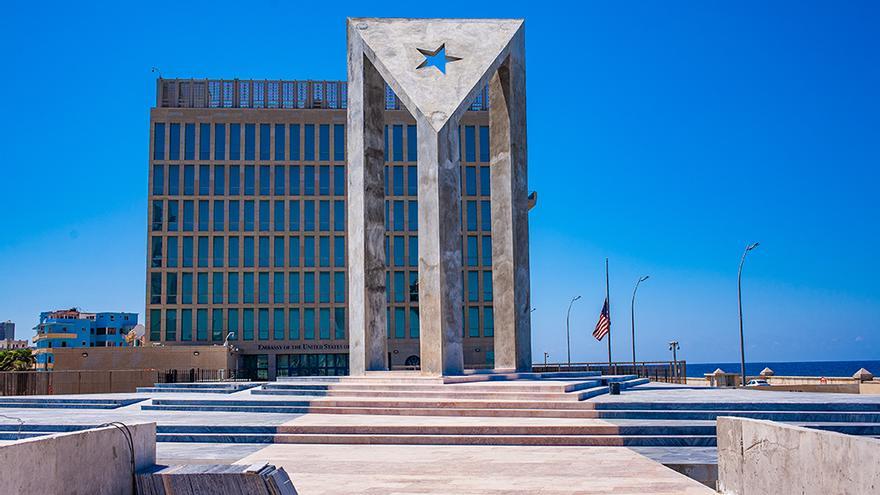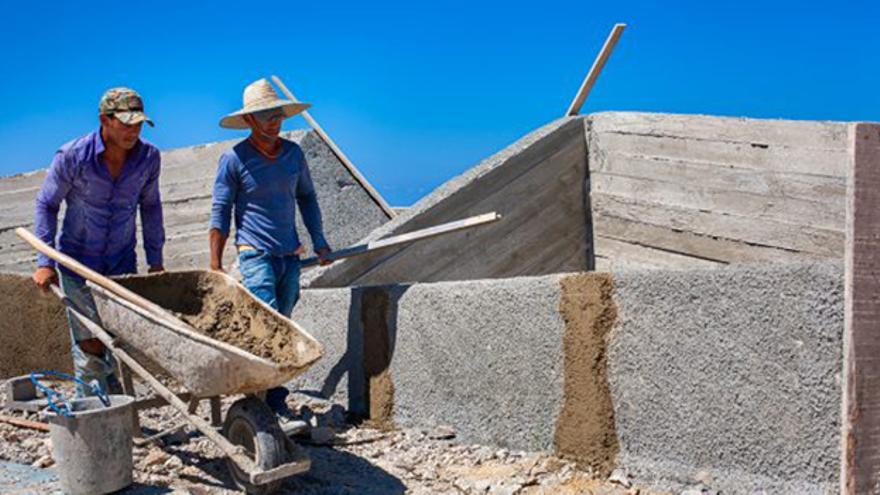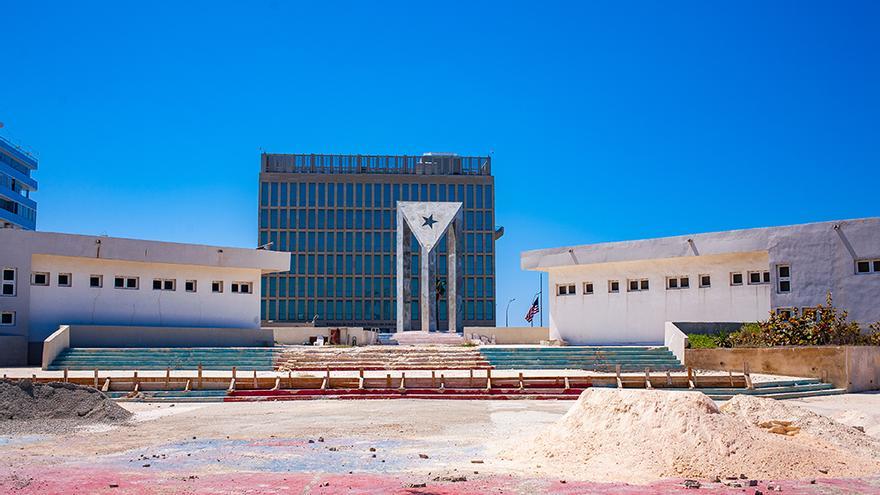
![]() 14ymedio, Havana, 14 April 2023 — In addition to seriously affecting the construction of homes, the lack of cement is delaying the restoration works of one of the most symbolic places of the Cuban regime, the Anti-Imperialist Grandstand of Havana, popularly known as the “protesto-drome.” The shortage of raw materials and fuel tops the list of problems for cement plants, such as the one in Cienfuegos, the country’s main supplier, which delivered barely 40% of its annual production capacity of one million tons in 2022.
14ymedio, Havana, 14 April 2023 — In addition to seriously affecting the construction of homes, the lack of cement is delaying the restoration works of one of the most symbolic places of the Cuban regime, the Anti-Imperialist Grandstand of Havana, popularly known as the “protesto-drome.” The shortage of raw materials and fuel tops the list of problems for cement plants, such as the one in Cienfuegos, the country’s main supplier, which delivered barely 40% of its annual production capacity of one million tons in 2022.
In recent days, the official press has devoted several articles to housing projects or key facilities in the productive fabric. The last one, this Thursday in Cubadebate, recounts the litany of problems experiences for the restoration of the Anti-Imperialist Grandstand, located on the Malecón, in front of the US Embassy.
The official media reports that the work began in 2019, but was stopped due to the confinement measures due to covid-19. Rafael Becerra Cardelo, official of the Specialized Services Company and the Integrated Project Management, told the digital news site that the last stage began in March 2022 and it was expected that by June of that year everything would be ready. However, due to the energy crisis, the plan could not be fulfilled and they still do not have a date for completion. The lack of cement is added to the list of problems, added the official.

The press describes the scarcity of this material as the Achilles heel of the construction industry, considered a “tractor” of the economy because it stimulates demand from other sectors. The shortage affects minor jobs to the point of aggravating housing precariousness, as in the province of Pinar del Río, where the Housing Directorate reports 102,2299 damaged houses that cannot be addressed due to lack of materials.
As of December 2022, the Cienfuegos cement factory, which supplies 60% of this material in Cuba, had completed the production of 406,505 tons, which the company’s manager, Ernesto Gálvez, told the Perlavisión channel is barely 40% of the production capacity of that plant, because the kilns had to stop in November due to the lack of raw materials and the island-wide blackouts.
Gálvez acknowledged that they are not at the production levels they “want,” but they are in line with the 2022 goal of 490,000 tons. At that time, the director suggested, without specifying a figure, that for this year the projections are “more challenging” with plans to reduce costs and ensure exports.
The provincial newspaper Escambray also dedicated an article this week to its Siguaney cement factory, located in the municipality of Taguasco, in Sancti Spíritus. Quoting the technical director of the company, Saúl Rodríguez Pérez, this outlet reports that production was barely 26 tons at the end of last year, a figure that deviates from the 500 tons that was expected in December.
Siguaney was paralyzed for seven months in 2022 due to repairs to its ovens. In order to reactivate the production lines, they had to wait for the import of refractory bricks, which could not be used until the last week of December, when there was also a decrease in the cuts in electrical service. As a consequence of the work stoppage, Rodríguez said, the productive rhythm was “so unstable” that it forced the industry “to rethink its way of doing things.”
The fuel shortage, the blackouts and the lack of accessories are “threats” to guarantee the current production of the cement plant, insisted the director, who, however, believes that he has “all the conditions” to comply with the 2023 plan to manufacture 50,000 tons of cement, of which 46,000 will be gray and 4,000 white.
Despite the fact that the proposed figure is higher compared to 2022, Rodríguez acknowledged that it is not enough to equal production levels before the stoppage and that, even complying with the plan, it would be 20,000 tons less than in 2021.

According to Escambray, the plant’s technicians and managers are aware that cement production in the province is “very far” from being able to supply commercial stores and Cubans who “intend to build.”
Siguaney’s main client is the Ministry of Construction, along with those of Housing and Tourism. A “small quantity” will be destined for sale to the population, where few can access a bag due to the exorbitant prices and because it is not easily found in hardware stores. The director assured that they will also manufacture a new cement for lining oil wells, with an order for 300 tons from the Oil and Gas Well Drilling and Repair Company (Empercap) and the same amount for the Australian Melbana Energy, which has started to operate in Cuba.
Rodríguez insisted that they did not sit “idly by” during the stoppage of activities last year and, to maintain financial liquidity, they began to develop alternative pieces that do not require steel, such as pavers and floor slabs.
The production problems had also been reported months before by the provincial press of Camagüey, where the 26 de Julio cement company is located. The newspaper Adelante reported in September of last year that the repair work at this plant was barely 15% complete. On that occasion, Deputy Prime Minister Ramiro Valdés Menéndez did not hesitate to blame the workers for the delay, pointing out their low productivity.
____________
COLLABORATE WITH OUR WORK: The 14ymedio team is committed to practicing serious journalism that reflects Cuba’s reality in all its depth. Thank you for joining us on this long journey. We invite you to continue supporting us by becoming a member of 14ymedio now. Together we can continue transforming journalism in Cuba.
